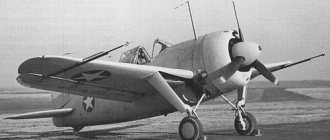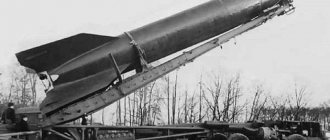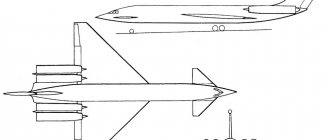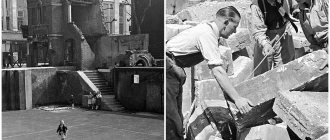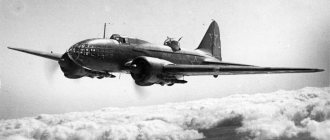Childhood and youth
The glorious biography of Sergei Vladimirovich Ilyushin began on March 30, 1894. The boy was born in the rural settlement of Dilyalevo into a family of seven children. Being the youngest son of poor peasants who were forced to worry about food, the future aircraft designer at a young age remained in the care of his brothers and sisters.
Until the need arose to help his parents with housework, the child, smart by nature, learned to read and write. As a child, he thoroughly studied the texts of the Bible, as well as the Vestnik Evropy magazine, which was kept in the house.
Posted by Boris Vasin on Monday, March 29, 2021
Sergei Ilyushin in his youth
The successes of the growing child pleased his father and mother, so at the age of 8 he was sent to a remote zemstvo school. Every day Seryozha walked about three kilometers to the village of Berezniki.
After graduating from the seven-year school, the descendant of the peasant, following the example of his older children, went to work. He mastered a number of labor-intensive professions in Vologda, Ivano-Voznesensk and near Kostroma.
In the early 1910s, Sergei ended up in St. Petersburg. Friends advised me to get a job at a hippodrome, adapted as an airfield. While performing the duties of a navvy, the teenager got the chance to watch the demonstration performances of aeronauts who came to the international aviation week. The boy admired the aerobatics demonstrated by Sergei Utochkin, Mikhail Efimov, Lev Matsievich and Vladimir Lebedev.
In 1914, Sergei joined the ranks of the military. He served in an infantry regiment in the Vologda region until the army command needed people to form a team for the Northern Aviation Region. The new location was the St. Petersburg Komendantsky airfield.
Three years later, the excellent combat training student was lucky enough to get into the soldier's aviation school. He received the right to pilot airplanes and until the end of his life he remembered the All-Russian Imperial Aero Club with kind words.
When, due to the slowdown in the growth rate of the aviation industry, the brigade working on the banks of the Neva with airplanes was disbanded, Ilyushin was disappointed. Pep returned after being drafted into the Workers' and Peasants' Red Air Fleet.
Master
Sergei Ilyushin was demanding of himself and others. He did not overly encourage his subordinates' desire to obtain advanced degrees. The designer believed that if you are completely occupied with your main activity at your workplace, then there is simply no time left for anything else. And if you want an academic degree, then it’s better not to work at Ilyushin Design Bureau.
Article on the topic
Real man. The true story of pilot Alexei Maresyev
Three times Hero of Socialist Labor and winner of seven Stalin Prizes (which is an absolute record), Ilyushin, unlike Tupolev, did not very often present his subordinates for state awards. But the designer tried to help with solving social and everyday issues, with their sanatorium and resort services.
The demanding Ilyushin believed that employees should work with dedication, but not overwork, because, in his opinion, those who worked “extremely” the day before are only able to work half-heartedly the next day.
The Ilyushin Design Bureau had a strict rule - all employees go on vacation in the summer, together, and then return together and continue working together. Ilyushin knew how to assemble and unite a team, and really valued true professionals.
Employees of KB Ilyushin. Photo courtesy of the press service of OJSC Il
And Sergei Ilyushin also possessed a rare quality, especially among people of such a high rank - even though he was wrong, he was able to openly admit it, which only added to his respect.
Article on the topic
Yours in the sky. The story of the life and death of pilot Valery Chkalov
He returned to his native village, which he had once left as a teenager, only three decades later. But after that I visited there every year, hunting, communicating with local residents. He sang Russian songs with pleasure, as if returning to his childhood, to his peasant roots.
In those days there were no “corporate parties” as such, but there was a tradition at the Ilyushin Design Bureau - once a year the chief designer ordered a motor ship, and all the employees went on it along the Volga - Moscow Canal. The ship stopped in a picturesque place, went ashore, played football, volleyball, swam, wrestled, and set a large communal table. This holiday was then remembered for a whole year, looking forward to a new one.
Ilyushin was a difficult person. Many could not stand his demanding nature, some considered him tight-fisted with awards, others believed that he kept specialists with him for too long, not giving room for their independent growth.
But everyone admits one thing: the talented nugget Sergei Ilyushin created a unique design bureau, in which he was a real Owner. His planes won worldwide fame and recognition.
Aviation careers and development
In the early 1920s, the Red Army soldier had the desire and opportunity to enter the Air Force Academy named after N. E. Zhukovsky, which trained engineers. Having joined the circle of aircraft modellers, Sergei began to design aircraft on his own. The gliders “Mastyazhart”, “Rabfakovets” and “Moscow” participated in all-Union and international aeronautics festivals.
After graduating from a higher educational institution and defending his diploma, Ilyushin was awarded the title of mechanical engineer of the Soviet Air Force and made the head of a specialized committee under the Central Office of the Air Force.
For a number of years, Sergei Vladimirovich and his colleagues studied the world experience in aircraft construction and worked on developing technical requirements for aircraft planned for production in the USSR.
View this post on Instagram
A post shared by In Memory of the Unknown Soldier (@pamiati_neizvestnogo_soldata)
Aircraft designer Sergei Ilyushin
Despite the interesting and responsible work, a native of the village of Dilyalevo strived for independence. In mid-1931, the military man asked to be transferred to the aviation industry. Having received the approval of party leader Pyotr Ionovich Baranov, he became the head of the design bureau of the Central Aerohydrodynamic Institute named after Professor N. E. Zhukovsky.
A year later, Ilyushin, with the support of People's Commissar Sergo Ordzhonikidze, initiated the division of powers of aircraft designers and insisted on the founding of the Central Design Bureau for the design of light aircraft based on the aircraft plant named after Vyacheslav Rudolfovich Menzhinsky.
The first creation of the new organization was a bomber, which in 1936 broke the cargo lifting altitude record. Later, Ilyushin developed the IL-2 attack aircraft, which was called a “flying tank” during the Great Patriotic War. For this he was awarded two Stalin Prizes and the title of Hero of Socialist Labor.
In peacetime, the bureau, headed by a graduate of the Moscow Air Force Academy, began creating passenger aircraft. The release of civilian ILs that served clients was recognized as a contribution to science.
In the early 1970s, Ilyushin began to experience health problems and left his post as head of the design bureau at the Central Aerohydrodynamic Institute. While strength allowed, the outstanding aircraft developer appeared at the enterprise to advise the successor, Genrikh Vasilyevich Novozhilov, and members of the scientific and technical council of the current S.V. Ilyushin Aviation Complex.
You can't do it without a sledgehammer
But Ilyushin was distinguished by incredible tenacity and efficiency. Where knowledge was lacking, the mechanic's experience helped. At the institute, he participates in the work of a glider circle, building his first own aircraft.
His first glider greatly amused his colleagues. Due to the imbalance, he could only fly if... a sledgehammer was tied to a long pole in front.
The first setbacks might have broken someone else, but not Ilyushin. He learned from his own mistakes, corrected them and continued to work.
In 1926, when Ilyushin graduated from the institute, he was eager to get into design work, but he was appointed chairman of the aircraft section of the Air Force Scientific and Technical Committee. In this position, Ilyushin studied the best practices of the world aircraft industry, assessed the developments of leading Soviet specialists, but did not build anything himself. The designer himself later said that this experience benefited him - during this time he understood the designs of almost all the best aircraft of our time.
Article on the topic
12 seconds of sky. How the Wright brothers taught people to fly
In 1931, Ilyushin achieved his goal - he headed the TsAGI design bureau. However, his position at that time was far from practical activities. And the bureau itself, due to constant mergers and organizations, has turned into an extremely clumsy structure.
In 1933, the design bureau was divided into two. The TsAGI design department, which develops heavy aircraft, was headed by Andrey Tupolev; Central Design Bureau of the Aircraft Plant named after. V. R. Menzhinsky , who was entrusted with the creation of light aircraft, is Sergei Ilyushin. Thus began the rivalry between the two great designers, which would take Soviet aviation to new frontiers.
Personal life
In the personal life of the Soviet aircraft designer there were two official marriages. With his first wife, Raisa Mikhailovna Zhalkovskaya, Ilyushin raised his daughter Irina and son Vladimir, a test pilot awarded the title of Hero of the USSR.
After the Great Patriotic War, Sergei Vladimirovich separated from his wife because of Anastasia Vasilievna Sovetova, an employee of his design bureau. The stormy, long-term romance was condemned by members of the work collective. However, the aircraft designer did not offend his beloved.
Posted by Denis Sergeyevich Storozhenko on Tuesday, March 30, 2021
Sergei Ilyushin at the controls of an airplane
Raisa, who was left with the children, received alimony and a large apartment from her husband, but the descendants did not forgive their father’s betrayal until the end of their lives. Ilyushin, upset by the break with his first-born sons, switched to communicating with the sons born in his new marriage. He ensured that the elder Sergei followed in his parent’s footsteps and received a university diploma with a specialty in engineering.
The legendary Messerschmitt
0
Without a doubt, Wilhelm Emil Messerschmitt was one of the most talented designers in the history of world aviation. Many original projects came out of his hands, embodied in metal, but only two brought him worldwide fame - Bf-109 and Me-262. In 1909, during the summer holidays, he visited the International Aviation Exhibition with his father. There the boy saw airplanes for the first time and fell in love with aviation for the rest of his life. One of the designer's most significant developments was the all-metal Messerschmitt Bf-109 escort fighter. In 1934, the Bayerische Flugzeugwerke (Bavarian Aircraft Factory) began producing a steel aircraft with a predatory profile, which terrified all of Europe, hence the name. In 1939, the Me-109 set a world speed record. This fighter became the mainstay of German aviation during World War II. During the hostilities, both the French and the British managed to obtain samples of the latest German fighter. But if this was no longer necessary for the first, the British delivered the Bf-109E-3 to their Boscombe Down test center. The tests showed that the leading British fighter at that time, the Hurricane, was inferior to the German in all respects. The Messerschmitts were responsible for most of the 322 Soviet aircraft shot down on the first day of the war.
Ilyushin aircraft
- DB-3 - Twin-engine long-range bomber.
- IL-2 - Heavy two-seat attack aircraft.
- IL-4 - Twin-engine long-range bomber.
- IL-10 - Heavy attack aircraft.
- IL-12 - Medium-range twin-engine passenger aircraft.
- Il-14 is a short-haul twin-engine passenger aircraft.
- Il-18 is a long-range four-engine passenger aircraft.
- IL-20 - Electronic reconnaissance aircraft.
- IL-28 - Front-line bomber.
- Il-38 - Anti-submarine patrol aircraft.
- IL-62 - Long-range passenger aircraft.
"Flying Cobra"
0
In 1912, aircraft mechanic Lawrence Bell nearly ended airplanes for good when his older brother, stunt pilot Groover Bell, died in a crash. But friends persuaded Lawrence not to bury his talent, and in 1928 the Bell Aircraft company appeared, creating the most famous American fighter of World War II, the P-39 Airacobra. Fun fact: thanks to deliveries to the USSR and Great Britain and the exploits of the aces of these countries, the Airacobra has the highest rate of individual victories among all American aircraft ever created. Airacobra - "Airacobra" (but usually just "Airacobra"). This plane cannot be confused with any other. An engine in the middle of the fuselage, an automobile-type cockpit door, a futuristic-looking three-wheeled chassis with a disproportionately long front strut - in fact, all these unusual design solutions had their reasons; they were aimed at increasing the combat and operational efficiency of the vehicle. As already mentioned, the engine was located behind the cockpit. Due to the rearward shift of the center of gravity, the fighter was very maneuverable. The P-39 Airacobra fighter became the most popular and most famous of those delivered to the USSR under Lend-Lease - the same symbol of help from the Western allies as the Studebaker truck, Dodge three-quarters and a can of American stew. "Cobra" was very popular among Soviet pilots, it was appreciated and loved. Many “Stalinist falcons” won the lion’s share of their victories on the Airacobra.
Breakthrough of the "Prototype"
0
Jiro Horikoshi is a Japanese aircraft designer. He is best known as the designer of the A6M Zero, a very successful World War II fighter. Jiro Horikoshi was born in 1903 in the village of Fujioka. He studied at Fujioka High School. During his school years, he became interested in aircraft manufacturing, reading newspaper reports about air battles of the First World War in Europe. Subsequently, Horikoshi entered the Faculty of Technology of the University of Tokyo in the direction of aeronautical engineering. His university study buddies included such subsequently famous Japanese aircraft designers as Hidemasa Kimura and Takeo Doi. After completing his university education, Horikoshi in 1926 got a job as an engineer in a department that dealt with internal combustion engines. The company owned an aircraft manufacturing plant in Nagoya, where Horikoshi ended up. In 1937, Horikoshi began working on the Prototype 12 aircraft, which went into production in 1940 as the A6M Zero. The Zero was a carrier-based fighter with a single lifting surface. Until 1942, the Zero was superior to the aircraft of the anti-Hitler coalition countries in maneuverability, speed and flight range, and until the end of World War II it remained the basis of Japanese naval aviation.
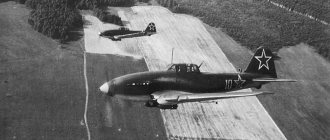

!['Domestic small arms [studio "Wings of Russia"] (2011)'](https://knifesburg.ru/wp-content/uploads/otechestvennoe-strelkovoe-oruzhie-studiya-krylya-rossii-2011-330x140.jpg)
